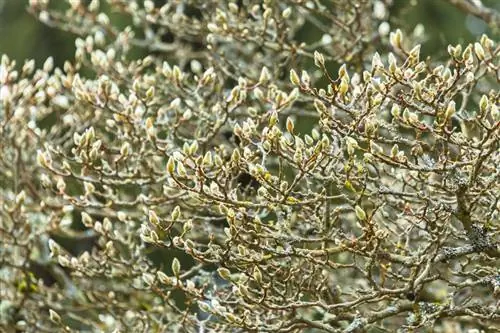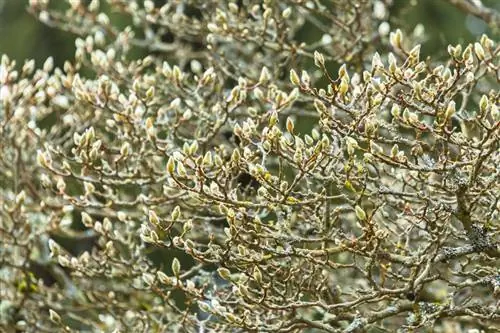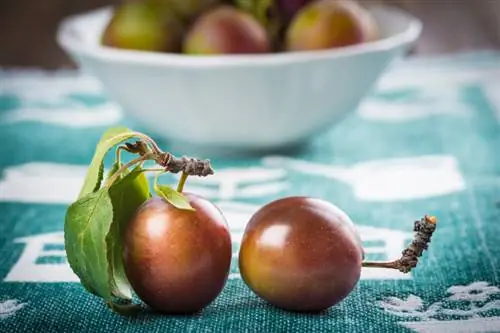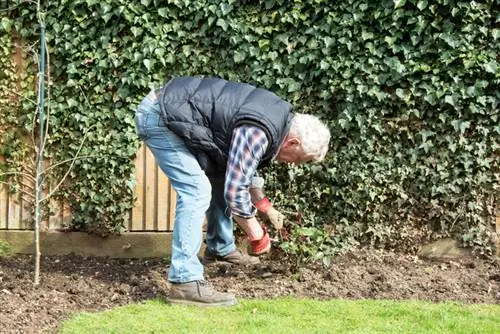- Author admin [email protected].
- Public 2023-12-16 16:46.
- Last modified 2025-01-23 11:20.
Sal willow is cultivated as a large shrub or as a small tree. If you cut it back heavily immediately after flowering, it encourages the plant to grow strong shoots in the same year and to bloom profusely in the following year.

How do I cut a willow correctly?
To properly prune a willow, carry out a radical pruning after flowering in April, removing all but the base of the branches and leaving only the trunk with branch stubs. Other possible pruning measures include planting pruning, training pruning, topiary pruning and rejuvenation pruning.
The sal willow, which is widespread in Europe, grows wild on the edge of forests and on rubble heaps, but is also often used to green streets and parks. It feels comfortable in a sunny or slightly shady place. The sal willow is wind and frost resistant, easy to care for and robust. Salix caprea is also extremely fast-growing: between 50 and 100 cm are added every year. Pruning is therefore advisable.
Annual maintenance cut
So that the willow can produce many flowers every spring, it should be cut back radically in April immediately after flowering. This means removing all branches except for the base, leaving only the trunk with a few branch stubs. If you are afraid of such a cut, you can first simply shorten the excessively long shoots. If necessary, it can be trimmed again later in the year. In any case, the cut helps the bush to produce new, dense shoots.
More cutting options
In addition to the annual maintenance pruning, a few pruning measures play a role in the willow:
- Plant cutting
- Educational Cut
- Topiary
- Rejuvenation cut
The plant cut immediately after planting ensures optimal branching. To train the sage willow as a tree, which generally grows as a shrub, you choose a straight shoot and cut off all other shoots directly at the base (training cut). Topiary cutting keeps the willow hedge in the desired shape and size. The rejuvenation cut is used to renew bald areas.
Tip
If you can't use a large tree in your garden, you can take advantage of the willow's enormous regenerative ability by cutting the tree down to the first fork or even the stump, thereby creating a compact pollarded willow.






